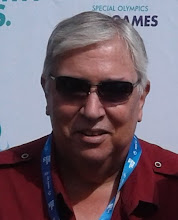Stages: The Way It Was, 11 January
1927: PLAYHOUSE 242---The Royale Theater in New York City opened for business, at 242 W. 45th St. Designed by Herbert J. Krapp, trademarked by a vaulted ceiling and the Willy Pogany mural Lovers of Spain, the Royale was built for dramas and small-scale stage musicals but was also used as a radio studio by CBS in the 1930s.
The Shuberts acquired control from the Martin Chanin family in 1929 and allowed CBS to use the Royale, before the Shuberts gave the radio shows the hook and restored the Royale strictly to live theater in 1941.
A number of famous productions, many of which won awards and legend alike, played the Royale. Its first known hit was 1928’s Diamond Lil with Mae West. Subsequent successes on the Royale stage included Night of the Iguanas (1961; a Tony for Margaret Leighton), The Subject Was Roses (1964; the play won a Pulitzer and co-star Frank Albertson bagged a Tony), Child’s Play (1970; Tonys for co-stars Fritz Weaver and Ken Howard), and Conversations With My Father (1992; a Tony for Judd Hirsch).
Twenty-two years after the Shuberts ho-heaved radio out of the Royale, classic radio returned, sort of. Abe Burrows had made his bones writing for Duffy’s Tavern before becoming a Broadway legend; he wrote 1965's Cactus Flower, starring Lauren Bacall, Barry Nelson, and Brenda Vaccaro for 1,234 Royale performances, and spawning the film that made a bankable screen star out of Rowan and Martin’s Laugh-In cast comedienne Goldie Hawn.
1946: AMAZING?---About.com says that one Murder and Mr. Malone first hit the air on ABC in 1947. Frank Buxton and Bill Owen’s The Big Broadcast 1920-1950 lists one Murder and Mr. Malone premiering on ABC a year earlier. But the book also lists one The Amazing Mr. Malone premiering on ABC a year later.
And the thing of it is that all three could be right. You make the call.
This much I can determine: The series was based on the John J. Malone novels by Craig Rice (the pseudonym of Georgianna Ann Rudolph Craig), featuring a hard-boiled attorney who seemed a) to wish he were really a private investigator; and, b) a little less likely to be boiling courtrooms and criminals than to be getting boiled at the local saloon.
Basically, he was something of a screwball hardboil, so it seems. On radio, Mr. Malone featured Eugene Raymond, Frank Lovejoy, and George Petrie in the title role. (Petrie was known later for numerous character roles on television, including several on The Honeymooners---most notably Ralph Kramden’s fellow bus driver Freddie Mueller---before becoming a semi-regular on Dallas, as J.R. Ewing’s corrupt attorney Harv Smithfield.)
Rice herself wrote the show with help from Gene Wang, with Jack Robinson handling sound effects and Bill Rousseau directing. As best as can be determined, the show ran for a year on ABC and a separate year (1951) on NBC, as well as having one crack at television. (1951-52, ABC, with Lee Tracy in the title role and Petrie in a supporting role.)
In one way, the show did have an earlier radio audition. One of the Malone stories brought to film was 1945’s Having a Wonderful Crime, for RKO, starring Pat O’Brien as Malone with George Murphy and Carole Landis as his buddies Jake and Helene Justis. Having a Wonderful Crime was adapted for The Old Gold Comedy Theater---the short-lived series was directed by silent screen comedy legend Harold Lloyd---and aired on NBC 3 June 1945, with O'Brien reprising his film role but Tom Conway and June Dupree taking the Justis roles. The production was The Old Gold Comedy Theater's next-to-last show of the series.












0 Comments:
Post a Comment
Subscribe to Post Comments [Atom]
<< Home